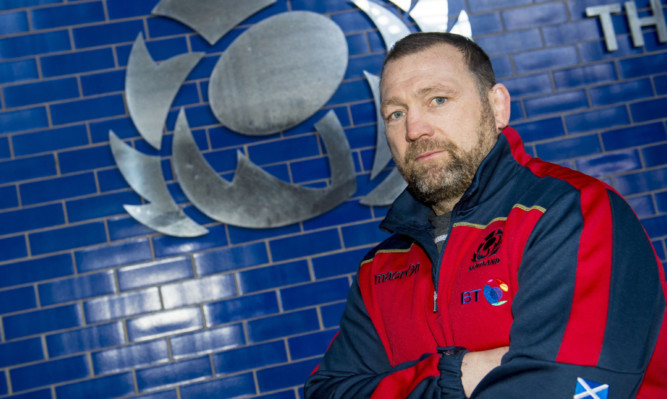Scotland’s biggest examination in Rome today may come from the inevitable tipping point that determines whether they are to get the catharsis of victory at last or be consigned to a tenth successive RBS 6 Nations loss.
Those moments requiring clear heads and composure have come thick and fast for Scotland during these last few seasons, and to put not too fine a point on it, they’ve all been failed.
Having France and Wales in control in the first two Six Nations games last year and letting it slip.
The catalogue of disasters at the end of last year’s game against Italy, the minutes after half-time when they had the lead against England at Twickenham.
The dying seconds in Paris during the World Cup warm-up when the French defence was splintered and one calm pass would have resulted in a winning try.
Most galling of them all, the fateful last seconds against Australia in the World Cup quarter-final, when a routine restart and a lineout were botched to give Craig Joubert the opportunity to make the error that cost the Scots a semi-final.
It’s continued this year. A missed tackle to give England a platform and a lead they weren’t to lose in the first game.
A badly executed lineout against Wales which gave them the field position for Jamie Roberts’ pivotal try.
The one time Scotland have executed with the pressure on was two years ago here in Rome, when they drove into position for Duncan Weir to drop the goal to win the game.
Wince if you like, but had Weir’s drop goal slipped wide Scotland would now be looking at 14 Six Nations losses in a row.
These errors happen too often for the coaches not to have noticed. Mistakes have to be tolerated in large part, but these are far too crucial for it not to have been an issue for attention.
Jonathan Humphreys, the forwards coach, was seen burying his head in his hands when Richie Gray’s tap back eluded Greig Laidlaw in Cardiff and forced a scrum five.
He knows that in this game, more than any, another error of this sort could be fatal.
“Take away the last warm up game and the last four five games against Italy have all come down to kicks at the end,” he pointed out.
“There’s every chance this game will be the same.
“Composure’s probably a good word for what we’ve been working on.
“The composure comes when making key decisions in the game at the crucial time.
“At those points before we have maybe become too focused on the outcome.
“It’s a fine line, we don’t want to be robotic team with a set response to every situation, but compartmentalising what we do at those points, that’s what we’re trying to do.”
Having three debutants on the pitch at the end of last year’s game against Italy, when a series of errors led to Italy’s penalty try to win the game, was “something we’ve learned from” said Humphreys.
The Australia game, in contrast, was a failure in execution and the coaching team have striven to put it right on the training field.
“It’s about clarity at that point,” he continued.
“I’m not sure it has been rushes of blood to the head, it’s about executing under pressure at the end of the game.
“It’s very frustrating for us as a group because we can’t get away from the fact that the players are unbelievably keen to get some reward for the hard work they’ve put in.
“They’ve put in an enormous amount of work.
“So we’ve done training about making decisions at the right time, about not making mistakes at lineouts five metres from our own line.”
Conservatism, however, will play into Italian hands, he added.
“We have a strategy to play this game, and you’re right being conservative is not going to get us what we want,” he said.
“We have to make sure we do the right thing at the right time in the right parts of the field.
“In any combat sport you’ve got to be smart at what you do. You can’t shy away from your opponent’s strengths but you’ve got to be smart at how you deal with them.
“We feel we have a strategy that we can mix in both areas but we want to play to our strengths.”
Humphreys acknowledges that whatever the belief in the squad that Scotland are improving, and even the tendency of many observers and fans to agree with that, results are all that matters.
“We feel we are going in the right direction, but this is a results business and we all understand that,” he said.
“But the only thing we can focus on is the opposition and squeezing these games out, and maybe winning these games well.
“We as a group of players and coaches believe that we are going the right way and there is a point when this will turn for us. But it’s impossible to focus solely on an outcome. We have to focus on what we do.”
